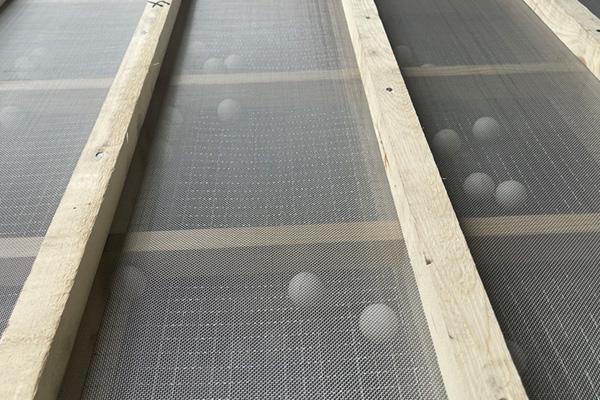The screen is a critical component of a linear vibrating screen. It is susceptible to wear and damage during daily production due to material impact and corrosion. Promptly replacing damaged screens ensures efficient operation of the screening equipment and product quality. Due to the significant differences in design and structure between different types of linear vibrating screens and the complexities of actual production scenarios, screen replacement methods need to be tailored to specific operating conditions and screen characteristics. Today, we will discuss three common methods for replacing linear vibrating screens for your reference.
Method 1: Replacing the Diameter of a Single Layer Screen
This method is suitable for replacing a single layer or several layers, such as when the screen structure uses a quick-release clamping mechanism. The specific replacement method is as follows: First, shut down the screening equipment completely. Remove the clamping components around the layer (such as bolts and push rods). Clean dust and impurities from the edges of the screen frame. Pull out the old screen parallel to the frame. Inspect the underlying support grid for deformation. Wipe the contact surface with alcohol to ensure a proper fit with the new screen. When replacing a new screen, gradually tighten the frame locks diagonally, ensuring uniform tension. Refer to the standard range in the equipment manual. (For most materials, the elasticity should be maintained within 90%-120% to prevent breakage caused by partial tension.) This method is suitable for equipment where the damaged layer is not adhered to other screen layers.
Method 2: Cutting and Assembling in Sections
Some companies require minimal production line downtime, so longitudinal cutting of heavily adhered screen layers is an option. During tool set preparation, use a plasma cutter to score and separate the broken sections of the screen, especially for screens with overlapping layers of woven wire mesh. Cut the new screen to size, leaving approximately 2cm of excess. Use cold welding or specialized metal clips to sew the folded edges together, ensuring the joint is 0.5mm above the mesh core to prevent material residue. This method is highly compatible with composite screens, but requires specialized skills. After replacing the new screen, monitor the tension near the cut line for at least two working days.
Method 3: Quick Disassembly of the Entire Screen Frame
If the corrosion area of a single- or multi-layer linear vibrating screen exceeds 80%, especially if the base frame welds are loose, replacing the entire screen frame is more cost-effective. First, turn off the power, disassemble the protective cover and sensor wiring, remove the main bracket retaining bolts at the bottom screen frame, and adjust the entire screen assembly (new assemblies are usually pre-assembled by the manufacturer for replacement). When installing the new screen frame according to the original disassembly and assembly orientation, use a spirit level to adjust the longitudinal and lateral tolerances to within 1mm. Otherwise, the screen may shift or become stuck during operation. After installation, perform a no-load test run and calibration layer by layer. This method can address multiple hidden fault points and is particularly suitable for long-term screening equipment on production lines.

In summary, when replacing the screen mesh of a linear vibrating screen, a balance must be struck between maintenance efficiency and effectiveness. As operators gain experience, they can adopt a combination of measures based on dynamic feedback from material screening results to maintain the stability of the screening equipment. This reduces maintenance frequency, lowering costs and increasing efficiency for the company.
Clearly separated particles, intelligent screening— Mirant Xinxiang Machinery.